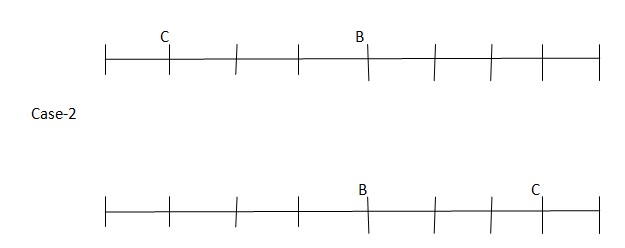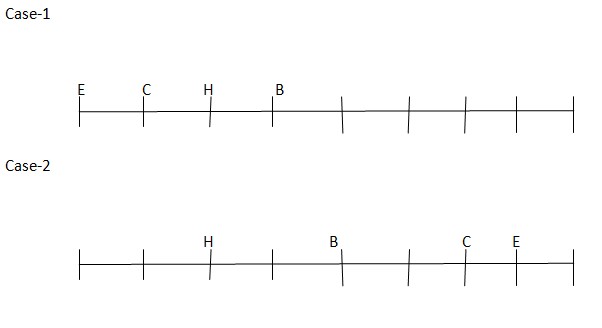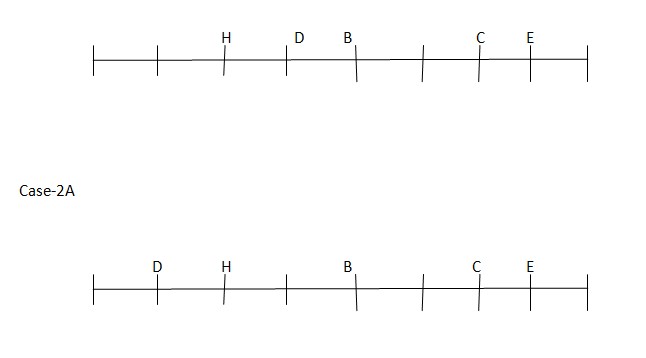Question
Who among the following sits fourth to the right of
H? Study the following information carefully and answer the given questions: There are nine persons i.e. A, B, C, D, E, F, G, H and I are sitting in a linear row. All of them are facing in the north direction. B sits at the middle of the row. Two persons sit between C and B. E is an immediate neighbour of C and sit at the end of the row. H sits third from the left end of the row. D is an immediate neighbour of H. Number of persons sit to the right of F is equal to the number of persons sit to the left of H. I sits exactly between B and F. At least one person sits between G and A who does not sit at the end of the row.Solution
B sits at the middle of the row. As per this statement, the arrangement will look like this:  Twopersons sit betweenCand B. Asperthisstatement,therearetwopossiblecases andthearrangementwill look like this:
Twopersons sit betweenCand B. Asperthisstatement,therearetwopossiblecases andthearrangementwill look like this:  EisanimmediateneighbourofCandsit at the end ofthe row. H sits third from the left end of the row.As per this statement, the arrangement will look like this
EisanimmediateneighbourofCandsit at the end ofthe row. H sits third from the left end of the row.As per this statement, the arrangement will look like this  DisanimmediateneighbourofH. Asperthisstatement, CASEII willfurthergetsplitintoone more case and the arrangement will look like this:
DisanimmediateneighbourofH. Asperthisstatement, CASEII willfurthergetsplitintoone more case and the arrangement will look like this:  Case-2
Case-2  NumberofpersonssittotherightofFisequalto the number ofpersonssit to theleft of H. IsitsexactlybetweenBandF. At least one person sits between G andAwho does notsitat theendoftherow. As per this statement, CASE I and CASE II will geteliminated and we will continue with CASE II (A) andthefinal arrangement will look likethis:
NumberofpersonssittotherightofFisequalto the number ofpersonssit to theleft of H. IsitsexactlybetweenBandF. At least one person sits between G andAwho does notsitat theendoftherow. As per this statement, CASE I and CASE II will geteliminated and we will continue with CASE II (A) andthefinal arrangement will look likethis: 
What is the most abundant gas in the Earth's atmosphere.
Who was the third astronaut to travel to the Moon alongside Neil Armstrong and Buzz Aldrin?
Consider the following statements in regards to INS 2B (ISRO NanoSatellite 2B):
1. The INS 2B is a nanosatellite
2. It is developed j...
What are the initial symptoms of Mpox?
Identify the most abundant metal in the earth's crust.
D.N.A. does not contain
Which of the following correctly describes the features of Tribo-Electric Nanogenerator (TENG) technology?
Which measurement's SI unit is named after Blaise Pascal?
How many satellites of the Indian Regional Navigation Satellite System (IRNSS) are currently operational?
1. Which of the following statements is/are not correct in regards to Nano Ureat?
1. Nano Urea liquid, a fertilizer leveraging nanotechnology,...
Relevant for Exams:


